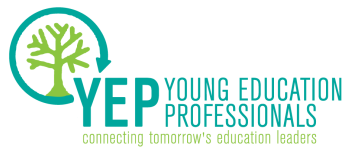 Courtesy of New York Daily News
Courtesy of New York Daily News Now, more than 5,600 charter schools in the United States serve more than two million students. Every one of those schools has a stated mission that serves as a creed to distinguish their approach. But divided, they’ve lost sight of the broader picture: the mission of the charter school movement first envisioned by Shanker.
The relationship between traditional public schools and charters has become an increasingly contentious one since Minnesota passed the first charter school law in 1991. In turn, it has damaged a great capacity to capture the wisdom of passionate reformers and change our system for the better. Instead of ramping up an increasingly hostile landscape of public schools against their charter counterparts, our education system needs a concrete plan that effectively “charterizes” the public schools, creating more, smaller community-based schools that have the flexibility and funds to effectively serve all students and that grow from the expertise of teachers.
We have great minds at work everyday imagining, experimenting, and sharing new models of instruction and school administration. Unfortunately, despite our best efforts to share new ideas and models for change, that organic process is far too slow to ensure we will meet the ambitious goals we all share for our students. It’s time for states to amend charter laws to create stronger incentives and mandates for public schools to adopt best practices found in the charter world, while also giving those public schools the same latitude of decision-making that charters enjoy.
Right now, under competitive grant programs like Race to the Top (RTT), federal dollars follow pledges to create conditions for innovation by expanding charters, adopting the Common Core, and more. RTT also funds successful plans to improve low-performing schools. We might have broader success if money followed the implementation of proven best practices instead of these broad, and often missed, academic achievement benchmarks. To do so, new and democratic Best Practice Committees, made up of educators and administrators, should be formed within states (though they may work under current oversight committees or departments of education) to consolidate, test, and fairly judge best practices in instruction and school administration. To stay true to the mission of the reform movement, the Best Practice Committee should provide a menu of options that all schools — public and charter — must implement within a fair timeframe or face the possibility of closure. Finally, school infrastructure should be overhauled (think: smaller community schools, not warehouses) so that implementation of these practices is more practical and efficient. This would, methodically and intelligently, close the gap between public and charter until we have one system.
While a more concrete plan for successful implementation would require further research and study, these ideas can serve as a starting point. It also must be done in a way that protects the rights of teachers and other school staff. The innovation that gave birth to the charter movement sprang up in places that all had one thing in common: strong unions with collective bargaining, strong district managers, and a strong relationship of trust between the two. Collaboration like this has already empowered teachers and produced results in places like Pittsburgh, Pa., and Hillsborough County, Fla.
In these moments of fast-paced change, it’s worth taking a moment to reflect on how the charter movement began and in doing so, make a critical choice. We can allow the divide between charter and traditional public schools to grow, choosing to view it as a competition and fighting for our side and our students to win. Or we can choose to ensure that charter schools are, as Shanker intended, the laboratories of innovation that make all of our schools better.
Scott Goldstein is a social studies and ESL teacher at a D.C. public charter school. He can be reached at scottaudc(at)gmail(dot)com or on Twitter (at)ScottGoldstein.

 RSS Feed
RSS Feed